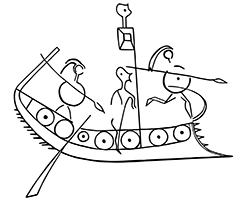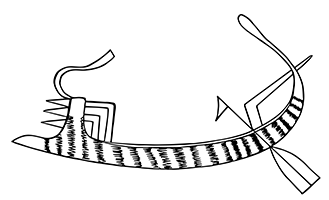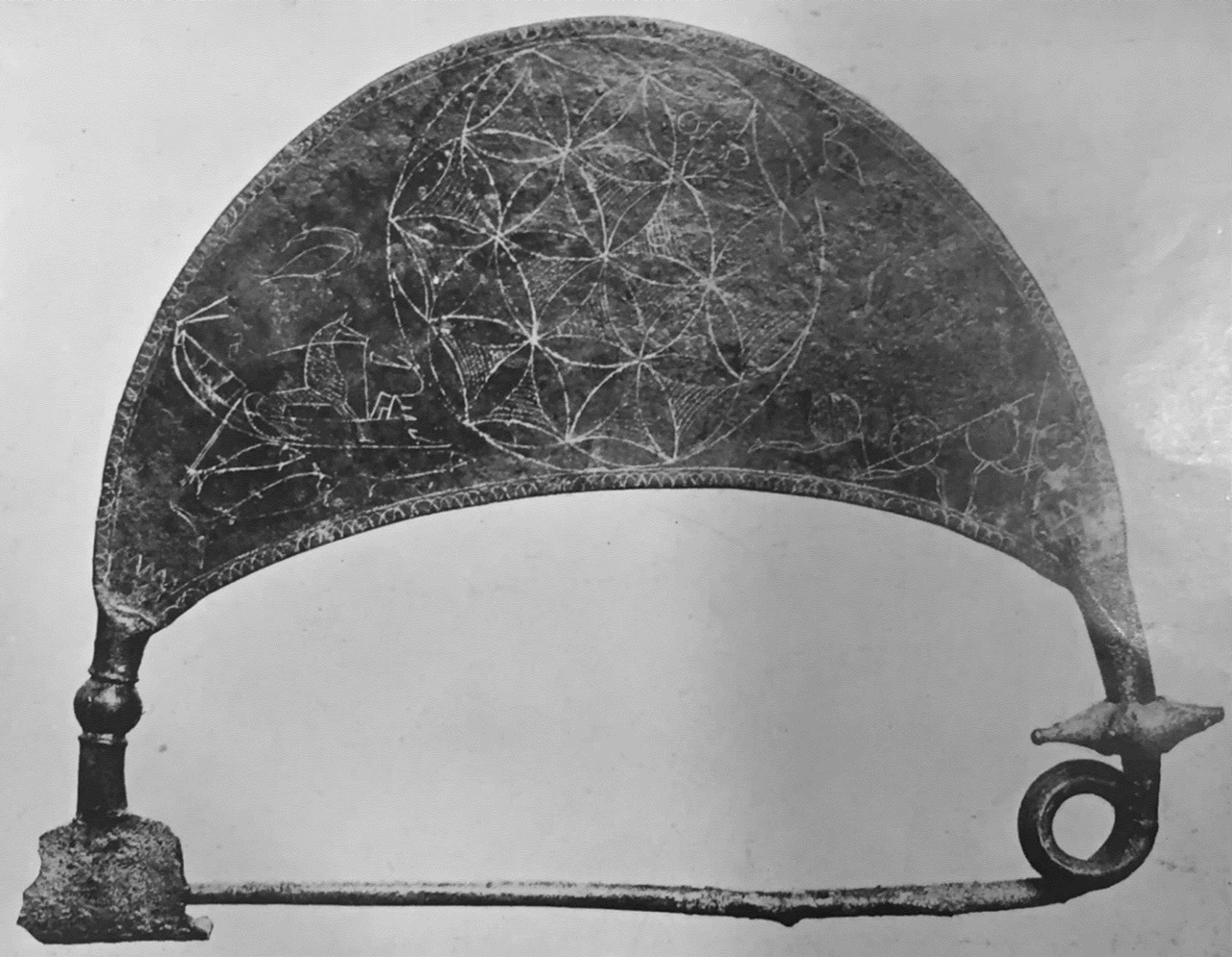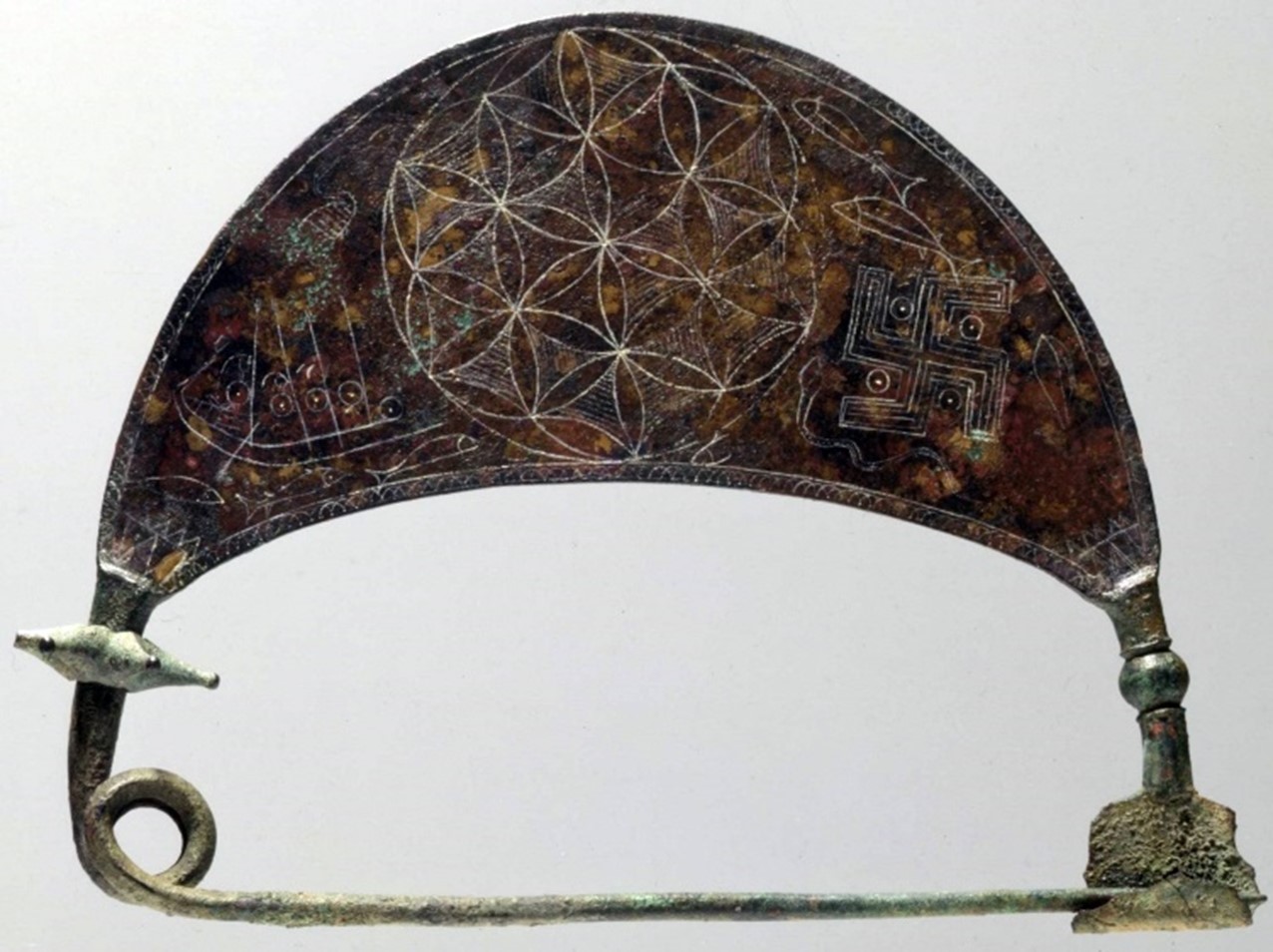A69a (Side A): Single-levelled ship to the right with a low flat hull. Triangular bow with a concave stempost integrating a beak-shaped ram and ending in an incurving horn device capped by a triangle shaped extremity. There are three short horizontal timbers tapering to a pointed tip projecting from the stermpost. The forecastle consists of a single rail. The sternpost is high and incurving, ending in a pointed tip. From its outer edge extends a further attachment triangular in shape, similar to that of the stempost except that its extremity is not closed off. The aftercastle consists of a railing supported by three vertical stanchions that is very similar to the one seen on a proto-attic ship from the acropolis. The quarter rudder is set just forward of the aftercastle. It is very slim and widens slightly towards the oar blade. The horse on board overlaps with the hull, as if seen in an x-ray manner. The two odd lines that seem attached to its muzzle in the shape of an inverted L are possibly the reins. A69b (Side B): Single-levelled ship to the right with a low flat hull. The bow is missing, so are parts of the warriors aboard. The sternpost is high and incurving, ending in a tapering horn that bends sharply inward and is capped by a diamond shaped tip. The aftercastle consists of a railing supported by three stanchions. Three additional horizontal strakes protrude from its inner edge. The quarter rudder is set forward of the aftercastle and has a triangular oar blade. Except for the first two warriors on the left which still have their heads, only the shields of the remaining three remain. The five shields generally follow the curve of the hull: the one at the stern is highest (above the aftercastle), followed by three that are broadly aligned, parallel but above the gunwale, while the last one at the bow is at gunwale level. Since this is the only shield that is not accompanied by a spear, one wonders if it was not placed along the ship's side rather than being carried by a warrior. The two spears amidships actually cut through the hull, which is most likely unintentional.
Two single-levelled galleys
A69a-b
c. 680 B.C.
Thisbe, Boeotia
H: 15.5 cm; W: 21.5 cm
Bronze fibula with the bow formed from a thin, vertical, crescent-shaped plate with incised decoration. The foot is a moulded knob terminating in a flat piece bent up to hold the pin. Above the spiral at the head are six spikes with rosettes on their tips.
Basch 1987: 192, no. 403; Hampe 1936: no. 62b, pl. 5; Morrison and Williams 1968: 76, Arch. 9
The shape of the fibula is identical to that of BM 1898.0226.1. Parts of the figural scenes are have faded.
Side A: A large circular emblem occupies the center, with the figured scenes on either side as customary for this type. In the left corner is a ship facing to the right with a horse on board, whose legs overlap with the ship's hull. Two fishes swim below while a bird hovers above. In the right corner are remnants of a partly faded battle scene involving two pairs of running warriors facing each other, equipped with rounded shields and spears. A small bird perches above. At either end of the bow are chevron patterns
Side B: A large circular emblem occupies the center as on side A. In the left corner is a ship facing to the right with five warriors on board equipped with spears and rounded shields. Three fishes swim below while a bird hovers above. In the right corner is a large meander-cross, with a snake below and three fishes swimming above. At either end of the bow are chevron patterns.
Basch, L. 1987. Le musée imaginaire de la marine antique. Athens: Institut Hellénique pour la preservation de la tradition nautique.
Hampe, R. 1936. Frühe griechische Sagenbilder in Böotien, Ate¬ne : Deutsches archäologisches institute.
Morrison, J.S. and R.T. Williams. 1968. Greek Oared Ships: 900-322 B.C. Cambridge: Cambridge University Press.








